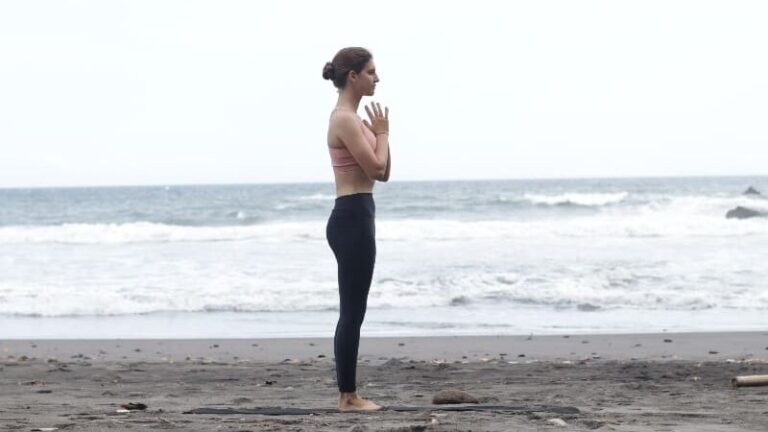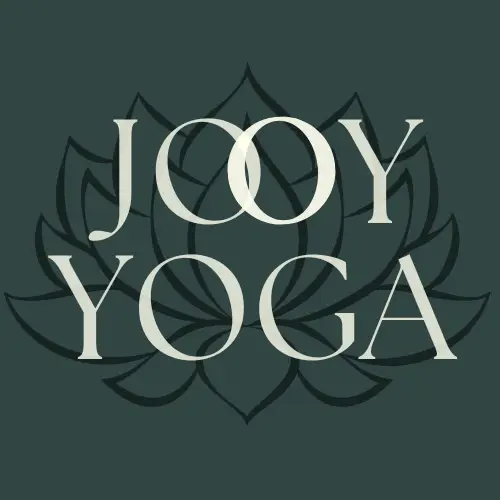Sun Salutations aka Surya Namaskar - What exactly is it?

Sun Salutations (Sanskrit: Surya Namaskar) are a short, flowing sequence of poses linked with the breath.
If you’re new to yoga in South London (Brixton, Herne Hill, Dulwich, Tulse Hill, Streatham), Sun Salutations are a brilliant place to begin.
They’re a short, flowing sequence of poses linked with the breath—a smart, time-efficient way to warm the whole body, build strength and mobility, and settle the mind before the rest of your practice.
Quick wins (why they’re worth your time)
- Full-body warm-up: Shoulders, hips, hamstrings and spine all get involved.
- Strength + mobility together: Plank/Chaturanga build upper-body and core strength; lunges and forward folds open common tight spots.
- Breath-led focus: Moving on the breath nudges your nervous system towards calm—3–5 rounds can shift your headspace fast.
- Scalable for beginners: Make them gentler (knees down, step rather than jump) or spicier (add Chair, Warrior I, or pace).
The best time to practice (and why some face the sun)
Traditionally, Sun Salutations are done at sunrise, facing east—a symbolic bow to new light and clarity. Many South London students love mornings because the sequence wakes you up without caffeine and sets a steadier tone for the day. That said, they’re useful any time—a lunchtime reset, a pre-run warm-up, or an evening unwind.
A (very) short history—where they came from
The exact origins are fuzzy, but the modern flowing sequence was popularised in the early 20th century by Bhawanrao Shriniwasrao Pant Pratinidhi, the Raja of Aundh, who published and promoted it widely. Later, systems like Ashtanga Yoga formalised two classic versions—Surya Namaskara A and B—which many studios still teach today.
Interesting facts to drop into conversation
- “108” Sun Salutations: Many communities mark seasonal shifts (e.g. solstices) by practising 108 rounds. The number 108 is considered auspicious across Indian traditions (mala beads, classical texts, and various mathematical/astronomical links). It’s a ritual of focus and endurance—not a starting point for beginners.
- Facing east: The custom of facing the rising sun is about intention as much as direction. Choose any orientation that’s safe and spacious where you practice.
- Name check: Surya = sun, Namaskar = greeting/salutation.
Beginner set-up: how to start (without scaring your wrists or hamstrings)
- Warm, not rushed: Try 3 easy rounds the first time. Move with a steady inhale/exhale; no breath-holding.
- Modify confidently:
- Step back to Lunge/Plank instead of jumping.
- Lower knees–chest–chin (Ashtanga Namaskara) instead of hovering in Chaturanga.
- Choose Cobra instead of Upward-Facing Dog if your lower back or shoulders prefer it.
- In Downward Dog, widen your hands slightly and soften your knees to lengthen the spine.
- Pace: One breath per movement to start; pause for 3–5 breaths in Downward Dog if you need it.
- Frequency: 3–5 rounds most days is plenty for beginners; add a round each fortnight if it feels good.
If you’re dealing with acute wrist/shoulder pain, unmanaged high blood pressure, or you’re pregnant and new to yoga—get personalised guidance first.
Why we practice them (beyond the mat)
- Ritual you can rely on: Do them anywhere—hotel room, office or a quiet corner at home—for consistency when life is noisy.
- Attention training: Moving exactly on the breath is moving meditation; the mind has a clear, simple job.
- Confidence builder: Progress is obvious—smoother transitions, steadier breath, stronger plank—so beginners see wins early, which keeps you coming back.
How they show up in different styles
- Ashtanga: Two codified versions (A and B) begin every practice.
- Hatha/Vinyasa: Often used as a general warm-up before standing sequences or as a short standalone when you’re time-poor.
A 5-minute starter you can try today
- Arrive (3 breaths): Stand tall (Mountain). Notice your feet and lengthen your exhale.
- Round 1 (slow): Step to plank, lower knees–chest–chin, Cobra, Downward Dog (3 breaths), walk forwards, soften into a fold, rise.
- Rounds 2–3: Repeat smoothly; option to add a low Lunge instead of stepping straight to plank.
- Finish: Stand still for three slow breaths; notice your pulse and mood.
Ready to learn Sun Salutations properly in South London?
In Week 3 of my small-group Explore Yoga (Beginners) course in South London, we break down Sun Salutations step by step—breath timing, modifications for your body, and how to build strength safely. If you’ve felt intimidated by fast classes or “Instagram yoga”, this is where it finally clicks.
Areas served: Brixton, Herne Hill, Dulwich, Tulse Hill, Streatham.
Next intake: See current dates on the booking page
Want me to save you a spot? Message me or book below
